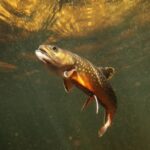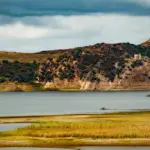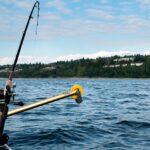There are thousands of lakes in the world, and with modern technology, we can calculate the water volume and size of these lakes with relative ease. Now that we know the size of every lake, we can answer the question, ‘What is the largest lake in the world?’
What Is a Lake?
Before we can explain what the largest 12 lakes are, we need to know what makes a lake a lake. If we take a pond, we see that a lake differs through the following factors:
- Depth – A lake is much deeper than a pond.
- Shape – A lake usually takes the form of an oval or a more complex shape, whereas a pond is typically rounder.
- Contents – Ponds always contain freshwater, while lakes tend to have some salt even though they are still classed as freshwater.
The primary factor that makes a lake a lake is that the water has an opening somewhere that leads to the ocean while the rest of the contents are closed off by land. A lake also reaches a depth of at least 20 feet and a size of 200 acres or more.
12 Largest Lakes in the World Ranked
Lakes vary significantly in depth and size. This article explores 12 of the largest lakes in the world.
Caspian Sea
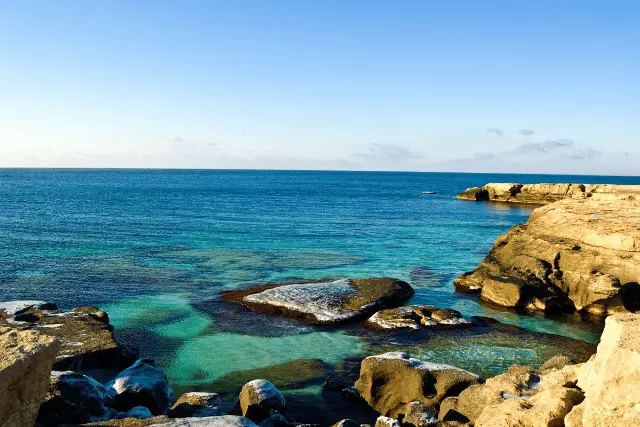
Area: 371,000 Km2
Deepest Point: 1,025 m
The Caspian Sea has features of both a sea and a lake. It’s the world’s largest lake and the largest inland water body. For its immense size, it’s also considered a full-fledged sea.
The lake borders Iran, Azerbaijan, Turkmenistan, Russia, and Kazakhstan. This endorheic basin sits 27 meters below sea level and has a water volume of 78,200 km3. Its deepest end is 1,025 meters, and its average length is 1,199 kilometers.
Interestingly, the Caspian Sea isn’t a freshwater lake. It’s partially salty, although only 30 percent as salty as seawater. The Caspian Sea’s tributaries include the River Volga, Kura River, and Ural River. This lake is the ancient remnant of the Paratethys Sea. Due to its size, the Caspian Sea has its ecosystem.
The Caspian Seal and Caspian Turtle are among the many species that consider the Caspian Sea home. Presently, it’s celebrated for its prominent oil industry and exceptional caviar.
Lake Superior
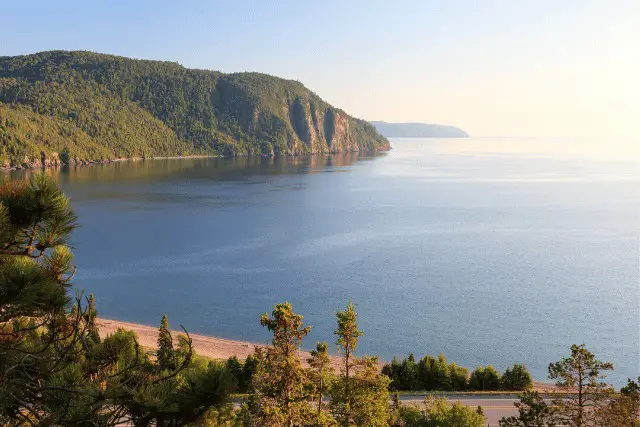
Area: 82,100 km2
Deepest Point: 406.3 m
Lake Superior is located in Canada and the United States. It covers an area of 82,100 Km2 and has a maximum depth of 406.3 meters. With a total length of 616 kilometers, Lake Superior is the second-largest freshwater lake on Earth and the largest of the North American Great Lakes. This lake is so large that it drains into the nearby Lake Huron.
Lake Superior borders the United States and Canada. The states bordering Lake Superior include Michigan, Wisconsin, and Minnesota. The lake holds an impressive 12,100 km3 of water, accounting for 10 percent of the world’s surface freshwater. Lake Superior’s water volume exceeds that of four Great Lakes combined.
Lake Superior is a prominent hotspot on the Great Lakes Waterway, ferrying materials and goods across the water. Given its extreme depths exceeding 400 meters at some points, it’s considered to be the most dangerous lake to swim in on Earth.
Lake Victoria
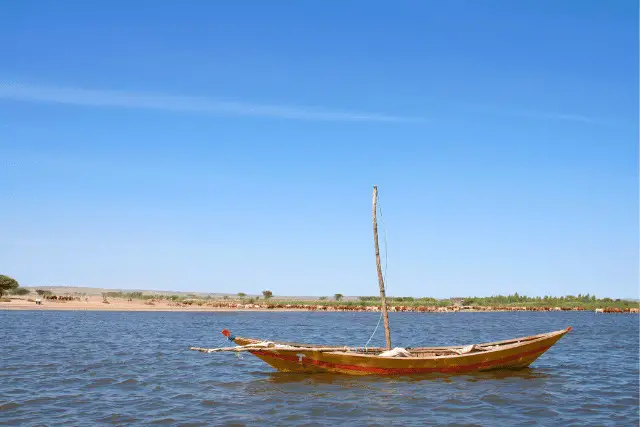
Area: 68,870 km2
Deepest Point: 84 m
Lake Victoria is the third-largest lake on Planet Earth and the second-largest freshwater lake in the world. It’s also Africa’s largest lake. The lake was originally known as Lake Nyanza until 1858 when John Hanning Speke, a British explorer, discovered it and renamed it in honor of Queen Victoria.
Lake Victoria’s shoreline length is 7,142 kilometers. It has a maximum depth of 84 meters. Of the lake’s 12,100 km3 total volume, 20 percent comes from relatively small rivers flowing into the lake, while a whopping 80 percent comes from direct rainfall.
Lake Victoria borders Rwanda, Kenya, Tanzania, Burundi, and Uganda. It hosts over 3,000 islands. There are also numerous reefs and archipelagos within this freshwater lake. The animals living around Lake Victoria include:
- Giant otter shrew
- Cane rats
- Bohor reedbuck
- Sitatunga
- Marsh mongoose
- Spotted-necked otter
- African clawless otter
- Hippopotamus
Lake Huron
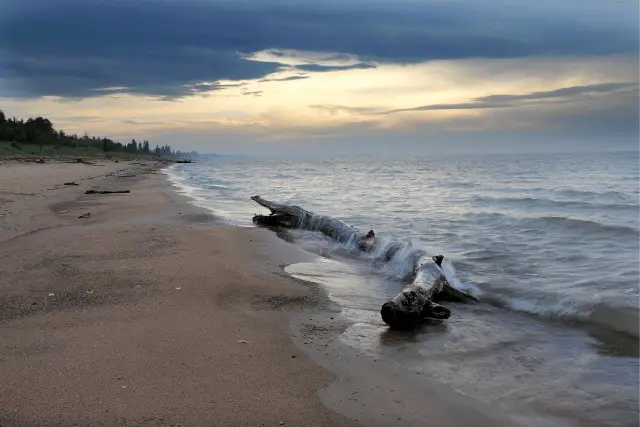
Area: 59,600 km2
Deepest Point: 229 m
Lake Huron borders the United States and Canada. More specifically, it borders Ontario and Michigan states of the US. This fourth-largest lake in the world connects to Lake Michigan via the Straits of Mackinac. Lake Huron is also the third-largest by volume and the second-largest by the surface area of the five of North America’s Great Lakes.
Lake Huron’s total length is 332 kilometers. It has a total volume of 3,540 km3 and a maximum depth of 229 meters. Lake Huron’s main tributary is the St. Mary’s River, with its main outlet being the St. Clair River.
Lake Huron is both a large and beautiful lake. It provides a natural habitat to many invasive species, including Quagga Mussels and zebras. The thousands of shipwrecks over the years are some of the lake’s exciting aspects.
Lake Michigan

Area: 58,000Km2
Deepest Point: 280 m
Lake Michigan, meaning “Great Water,” is the fifth-largest lake in the world and is among North America’s five Great Lakes. It’s the third-largest by surface area and the second-largest by volume of the Great Lakes. It’s also the only Great Lake located entirely in the US. This lake extends to a maximum depth of 280 meters.
Lake Michigan’s total volume is 4,900 km3. Its total length is 494 kilometers. The lake spreads west to east across Wisconsin, Illinois, Indiana, and Michigan. Lake Michigan’s shores touch numerous local and national parks.
Swimming in this lake is dangerous for many reasons. Its bottom is uneven, with deep drop-offs and holes. Its shoreline is also prone to deadly rip currents. Just a handful of Lake Michigan’s beaches have lifeguards.
Lake Tanganyika
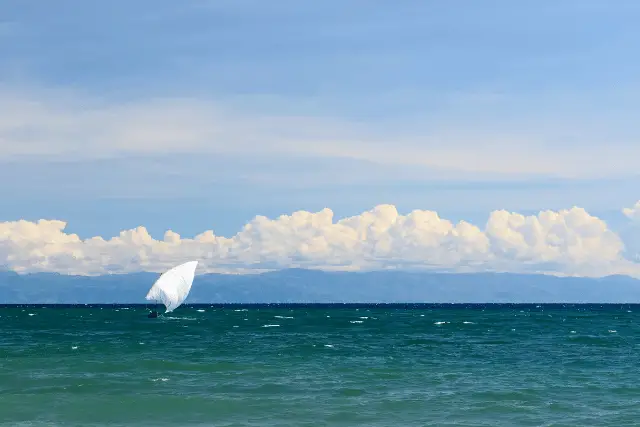
Area: 32,600 km2
Deepest Point: 1,470 m
Lake Tanganyika is the second-largest of the African Great Lakes and the sixth-largest lake in the world. This 676-kilometer-long lake has numerous superlatives associated with its name.
Lake Tanganyika is the second largest lake by volume on Planet Earth. It’s the second deepest and the second oldest freshwater lake in the world. The lake has a volume of 18,900 km3 and stretches to a maximum depth of 1,470 meters. People call it the gem of Africa. The lake borders the Democratic Republic of Congo, Tanzania, Zambia, and Burundi.
Like Lake Victoria, Lake Tanganyika is considered dangerous to swim in as it hosts Branded Water Cobra and the Nile crocodile. The lake has several islands, including:
- Kibishie Island
- Milima Island
- Kavala Island
Lake Baikal
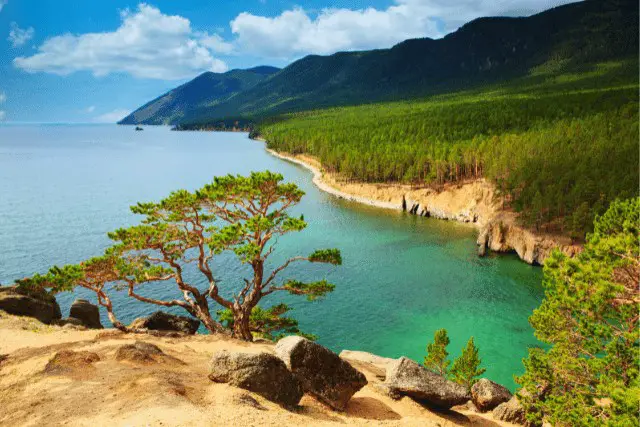
Area: 31,500 km2
Deepest Point: 1,637 m
Lake Baikal is notorious for its maximum depth of 1,637 meters. Although it’s not the largest lake by surface area, it’s typically the deepest by volume. This lake is located in southern Siberia, Russia. It accounts for nearly a quarter of the world’s unfrozen fresh water.
Lake Baikal’s shoreline length is 2,100 kilometers, and it is typically the world’s seventh-largest lake and the world’s largest freshwater lake by volume. It contains more water than all other North America’s Great Lakes combined. It’s also considered one of the clearest lakes in the world.
Lake Baikal is among the few lakes with sufficient oxygenated water to sustain life at its greatest depths. It’s home to over 1,700 animal and plant species. On a clear day, the lake’s visibility increases to a depth of 39 meters. The lake hosts a total of 27 islands.
Great Bear Lake
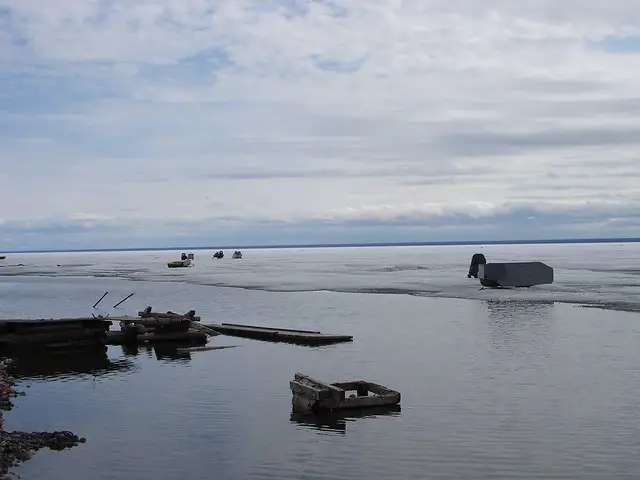
Photo source: mattcatpurple on Flickr https://www.flickr.com/photos/ntlibrarian/158842785
Area: 31,000 km2
Deepest Point: 446 m
Another one of the largest lakes in the world is the Great Bear Lake. Located in Canada’s Northwest Territories, the Great Bear Lake is the fourth-largest lake in North America. It occupies a total of 31,000 km2, qualifying it as the eighth-largest lake in the world.
The name Great Bear originated from the Chipewyan word “Satudene,” meaning “grizzly bear water people.” Great Bear Lake plunges 446 meters at its deepest point. It has a length of 373 kilometers and a volume of 2,236 km3. The primary inflows into the Great Bear Lake include the Big Spruce River and Whitefish River.
Great Bear Lake is known for its crystal-clear water. It’s fringed by tundra and Canada’s Boreal Forest, making it home to a wide variety of biodiversity and animals. The lake has the fewest fish species compared to other Canadian Great Lakes.
Lake Malawi
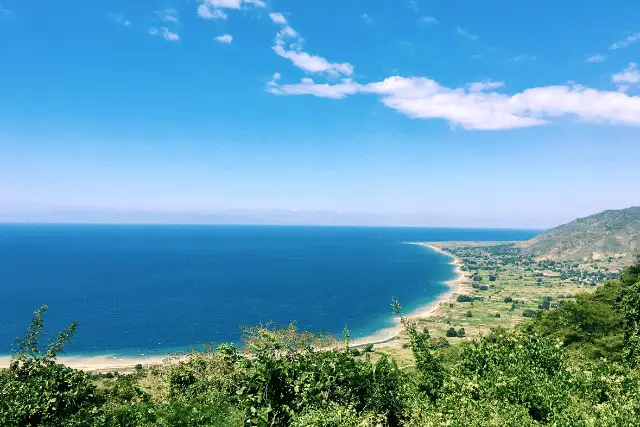
Area: 29,500 km2
Deepest Point: 706 m
Lake Malawi is known as Lago Niassa in Mozambique and Lake Nyasa in Tanzania. It’s the fourth-largest freshwater lake in the world by volume and the ninth-largest lake in the world by area.
Lake Malawi spreads across Mozambique, Malawi, and Tanzania along Africa’s East Coast. This lake has many claims to fame. In addition to Lake Malawi’s sheer size, the life it sustains also makes it a fantastic water body. Lake Malawi has a total volume of 8,400 km3 and plunges 706 meters at its deepest point.
Lake Malawi has unique water formations. Similarly to Meromictic Lake, its water layers don’t mix. The lake hosts both Chizumulu and Likoma islets. Lake Malawi has the most fish species of any lake on Earth, with over 700 species recorded.
Great Slave Lake
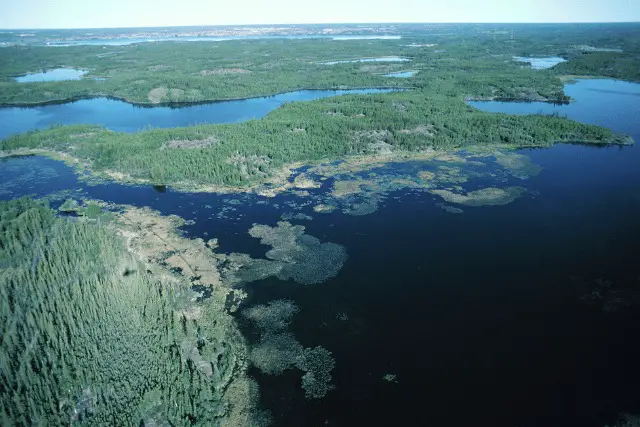
Area: 27,000 km2
Deepest Point: 614 m
The Great Slave Lake is the 10th largest lake in the world by area. It has a total length of 480 kilometers and a volume of 1,560 km3. The Great Slave Lake’s deepest point has a maximum depth of 614 meters, qualifying it as the deepest lake in North America.
This lake, whose name is derived from the Slavery people, is located in Canada’s Northwest Territories. Some of the most notable towns that surround it include Dettah, Hay River, Yellowknife, and Forth Resolution.
The Great Slave Lake is a hotspot for anglers and sailors who enjoy fishing for trout and pike in the lake. You’ll find an ice road named Dettah Ice Road in this lake.
Lake Erie
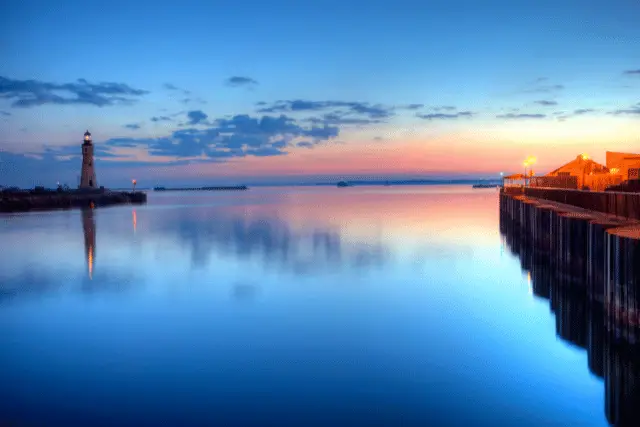
Area: 25,700Km2
Deepest Point: 64 m
Lake Erie is the 11th largest lake globally and the fourth largest by the surface area of North America’s five great lakes. It has the shortest average water residence time and the smallest by volume of all the Great Lakes. The lake plunges to 64 meters at its deepest point, making it the shallowest of the five of North America’s Great Lakes.
Lake Erie is located at the international boundary between the United States and Canada. On the US side, the lake borders the states of New York, Pennsylvania, Ohio, and Michigan, while on the Canadian side, it borders the Ontario Peninsula, a Canadian province of Ontario.
The lake has a length of 388 kilometers. It’s the warmest of the five North American Great Lakes and has a volume of 496 km3. Its basin is intensely farmed because of its fertile soils.
Lake Winnipeg
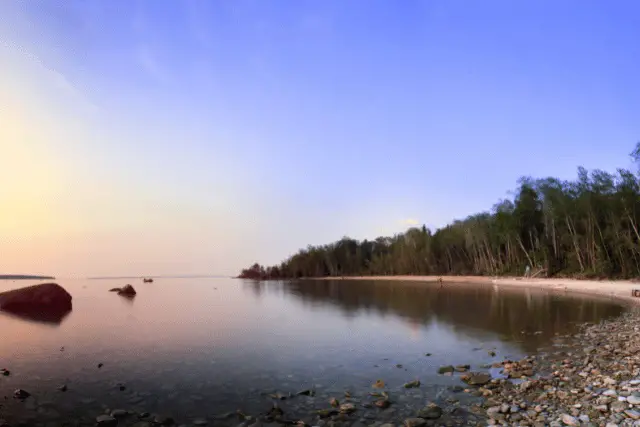
Area: 24,514 km2
Deepest Point: 36 m
Lake Winnipeg is a relatively shallow but vast lake situated in Central Canada. It has several tributaries, including the Winnipeg River and the Saskatchewan River. This lake has a maximum depth of 36 meters and a volume of 2,066 km3.
Lake Winnipeg’s drainage basin extends from Manitoba, Saskatchewan, and Alberta Rocky Mountains to Ontario Precambrian rolling metamorphic uplands. This lake has an average depth of 50 feet, making it ideal for commercial fishing and shipping.
The major islands within Lake Winnipeg include:
- Black Island
- Deer Island
- Hecla Island
Frequently Asked Questions
Below are FAQs about the largest lakes in the world.
What is the smallest lake in the world?
Benxi Lake is the smallest lake in the world by area. It barely occupies 15 km2.
Which lake is the shallowest in the world?
Lake Tonle Sap in Cambodia is the shallowest lake in the world, with its maximum depth plunging to less than 3 meters. Its water spreads to 24,000 km2.
What is a megalake?
A megalake is a super sizable prehistoric lake. The Paratethys megalake was, for instance, the largest lake on Earth.
What is the difference between a river and a lake?
A lake is a large standing or slow-moving water body surrounded by land on all sides, while a river is a large flowing water body emptying itself into an ocean or a sea.
- Do You Need An Indicator For Nymph Fishing? - November 16, 2023
- Fishing Safety Tips For Families - September 25, 2023
- What Is The Best Time To Night Fish At A Lake? - September 18, 2023



